Huaxi Qingyan Ancient Town Scenic Area
Qingyan Ancient Town, one of the four ancient towns in Guizhou, is located in the southern suburb of Guiyang City. It was built in Hongwu ten years (1378) of Ming Dynasty and was formerly a military fortress. In the town, the ancient buildings of Ming and Qing Dynasties, with exquisite design and craftsmanship, are interlaced and densely covered with temples, pavilions, painted pillars, carved beams and cornices. The town is a gathering of people, including Zhou Yujuan, a famous historian, and Zhao Yijing, the first literary champion in Guizhou's history, in the late Qing Dynasty. There are historical relics in the town, such as Qingyan Religious Case Site, Zhao Zhuangyuan Prefecture, Mr. Pinggang's former residence and the Red Army's Long March Operational Command, which shocked China and foreign countries in modern history. Zhou Enlai's father, Deng Yingchao's mother, Li Kenong and other revolutionary predecessors and their families all lived in secret in Qingyan. Qingyan Ancient Town was also one of the schools relocated to the west by Zhejiang University during the Anti-Japanese War.
In September 2005, Qingyan Ancient Town Scenic Spot was announced as the second batch of famous historical and cultural towns in China by the Ministry of Construction and the State Administration of Cultural Relics. In 2013, it was honored as one of the most charming towns in China in the Peak International intangible cultural heritage protection and heritage tourism planning project. In 2010, Qingyan Ancient Town was awarded the honorary title of "Hometown of Chinese Poetry" by the Chinese Poetry Society, and took the lead in becoming the homeland of Chinese poetry. In 2016, it was listed as the first batch of towns with Chinese characteristics by the Ministry of Housing and Construction. On February 25, 2017, it was rated as the national 5A tourist attraction.
Historical evolution
Located in Huaxi District, Guiyang City, Guizhou Province, Qingyan Ancient Town is the first national 5A-level tourist attraction in Guiyang City and one of the second batch of famous historical and cultural towns in China. It has a history of more than 600 years. It has a profound cultural and historical background, and its regional characteristics are quite attractive. Qingyan Ancient Town was built in Hongwu 11th year of Ming Dynasty (1378 AD). It was built because of the garrison troops of Ming Dynasty. It was named after the blue rock. It is a mountain military city evolved from the military city defense. It is known as the "South Gate" of Guiyang. In the early Ming Dynasty, Tunpu was built in Qingyan Ancient Town. During the four to seven years of Tianqi (1624-1627), Ban Lingui, the Buyi Tusi, built the Qingyan Tucheng, led 72 villages and controlled the Bafan Twelve Division. Qingyan Ancient Town, as a military fortress and occupied a special geographical position, after hundreds of years of construction and expansion, Tuchengyuan was replaced by stone walls and streets were paved with stone. The walls around the city are built on cliffs with huge stones. There are four gates in the east, west, South and north. Within the city, there are nearly 100 cultural relics and scenic spots in the area of 3 square kilometers.
In order to control the southwest border area, the Central Dynasty set up Guizhou Wei Commander in Hongwu in 1373 to control Sichuan, Yunnan, Hunan and Guiyidao. Qingyan is located in the middle of the main post road of Guangxi's entrance to Guiyang. It sets up a "shop" to deliver official documents and a "pond" to convey military information. It garrisons under the Shuangshi Peak to build a village, historically known as "Qingyan Tun".
In the fourteenth year of Hongwu (1381 A.D.), Zhu Yuanzhang sent 300,000 troops on an expedition to Yunnan and Guizhou. After entering the hinterland of central Guizhou, a large number of troops stationed in tuntian. The "Qingyan Tun" gradually developed into a "Qingyan Fort" with both military and civilian stationed.
geographical environment
Located in the southern suburb of Guiyang City, Qingyan Ancient Town is 29 kilometers away. It is the central distribution center of the southern suburb of Huaxi District and the historic and cultural ancient town of Guizhou Province. Located at 106, 37, 106, 44, 26, 17, 26, 23, it is about 10 kilometers long in North and south, 8 kilometers wide in East and west, with a total area of 92.3
The ancient town of Qingyan is situated near the mountains. It is logical that all the walls of the city gates are built with stones.
Cultural characteristics
Qingyan Town is a provincial cultural relics protection unit, a famous historical and cultural town, and a national civilized market. With historical culture, architectural culture, religious culture, farming culture, food culture, revolutionary traditional culture, multi-ethnic cohabitation.
Folk custom
Every year, dragon dancing, lantern dancing, Miao dance venues from the ninth to the twentieth day of the first lunar month, dragon and lantern activities on the fifteenth day of the first lunar month, as well as "You Bai Disease" on the fifth day of the fifth month of the fifth lunar month, Guanyin meetings on the nineteenth day of February and nineteenth month of the lunar calendar, etc., are very
Play "Kong Ming Lamp"
When Kongming lamp is set off, it is usually asked after Baoding is set off. Kongming lamp shade is cylindrical, about five feet high, with top sealing. It's like an upside-down Datun bamboo shed. The bottom of the lampshade is pasted with a circular bamboo ring about three feet in diameter. On the bamboo ring is a cross-shaped thin wire rack. In the center of the wire rack is a paper twist fried with vegetable oil. When discharging the orifice light, first use a bundle of straw to burn, let its hot air fill up the soft and long lampshade, and then ignite the paper twist to keep the heat of the air in the lampshade.
Put "water rat"
"Water mouse" is a kind of special small fireworks placed on the water, which can be set off in general festivals. It is rolled up layer by layer with straw paper and painted with various colors such as eyes, eyes, ears, etc. The mouse body is encapsulated with paraffinized oil after the broom. It contains two layers of gunpowder and one layer of lattice powder, which are connected by fuse in turn. When igniting, choose a calm and wide water surface first, and put the water mouse into the water, the water mouse will be for a while. It is very interesting to drill into the water and surfaced again, as if it were a live rat.
Place "Baoding"
Putting "Baoding" is also called "Putting Bonsai". Baoding is a large-scale fireworks, which is usually set off after the "light" on the 15th night of the first lunar month. The "Baoding" of Qingyan is six feet high and about three feet in diameter. The lower part of the "Baoding" is cylindrical and the upper part is conical. "Baoding" uses bamboo strips to braid the frame, white cotton paper to paste the exterior, and installs various fireworks and various figures or animals in the tripod according to the procedure. There are "rockets", "dripping flowers", "yaks", "spark canisters" and various "fireworks" like today's magic bullets. The modelling content depends on the local favorite stories. Qingyan has the images in such ancient dramas as "Fairy Flowers", "Legend of White Snake" and "Eighteen Sendings". Baoding combines all kinds of fireworks devices and various layers of shapes in sequence by a main lead.
At the same time, the fireworks emitted to the sky are numerous flashing "golden flower and silver pillars" and "ground mice" jumped out of the tripod, in the crowd "bouncing and jumping" everywhere; "rockets" one after another to the horizon, like a trail of meteors dragging fire. Scratched the sky; there are countless "fire dragons" flying in the air; "drops of sparks" dropping and dropping countless flashes. Bright pearls. Finally, there are lucky banners such as "Wugu Fengdeng" and "Guotai Min'an" to show the people's good wishes.
Folklore
The legend of Qingyan Dragon. At that time, on the hill of the Black Temple in the southwest of Qingyan, there were onions and catalpa trees. Around Longge Pavilion beside Qiantao Road, there are more forest oil firs. The yards and dams in the city are wide and good. High walls, many temples and palaces - Longevity Palace, Shoufu Temple, Longquan Temple, Catholic Church and so on. The dragon's head was in the river below Yinglongge Mountain, accompanied by many fish with large doorways. The dragon tail is on the mountain of the Black Temple, where the scales of the dragon can be seen. The dragon is stretching beneath the dam. In the center of the slate-paved dam, there is a tall brick tower with a pool in front of it. Under the tower and pool used to incinerate water paper is the waist of the dragon. It is said that there is also a big iron pot under it. A big cock is the guardian of the dragon's body. As soon as the waist of the Dragon twists, it will be flooded. The big cock pecks at her fiercely, the dragon's body will not move, and Qingyan City will not be flooded safely.
Historical celebrities
The climate of Qingyan Ancient Town is a subtropical monsoon climate, with an average annual precipitation of about 1250 mm, a sunshine duration of 2200 hours, an average temperature of 14-15 C. It is suitable for tours throughout the year.
In the alleys of the first primitive period, there were celebrities living in and out of the first primitive period. Qingyan people are proud that Zhao Yijing, the first champion of Guizhou Province in history, has become a tourist attraction.
Religious culture
It is very difficult to have such a "four religions in one" landscape as Qingyan in ancient towns in China. In Qingyan, Buddhist and Taoist temples are also very popular. Although Buddhist temples are not large-scale, they are well-laid out and have many masterpieces of exquisite craftsmanship, such as the stone carvings of Ciyun Temple and the wood carvings of Shoufo Temple, which are the only exquisite works in Guiyang City. Not far from the temple gate is the Christian church, where the church members listen to the white-haired old man explain the Bible. There are Taoist temples, in the curling smoke spread Taoist prayers.
The love affair of Zhejiang University
After the outbreak of the War of Resistance Against Japan, Zhejiang University moved westward to Guizhou at the end of 1939. Under the leadership of Zhu Kezhen, then president, most of the teachers and students transferred to Meitan, Zunyi. The first grade and the first class were located in the ancient town of Qingyan. Classrooms, libraries and offices are located in Longquan Temple, students live in Ciyun Temple, and internships and staff accommodation are located in Yuantong Temple and Black Temple respectively. This is the blind spot of Japanese aircraft bombing, which can protect the safety of teachers, students and teaching facilities.
Postal culture
The first "agency letter office" in Chinese history was established in the ancient town of Qingyan. In the fourteenth year of Guangxu (1888), the Qingyan people, Soviet Resistance, set up the "Agency Information Bureau". According to historical textual research, it is the first private "agency post office" found in the history of China, eight years earlier than the earliest official post office in China. Until 1939, when the "agency post office" was transformed into an official post office, the "agency post office" had been undertaken by the Wang family of Qingyan, and its business had never stopped, which led to the development of commercial trade in ancient towns and became a hub for transmitting important information from east, west, north and south, and was recorded in the history of China's postal development. The precious plaque "Agent Post Office" has been treasured by Beijing China Post Museum.
Film culture
Qingyan is the filming site of Lu Chuan's film "Seeking Guns", starring Jiang Wen. Jiang Wen is the person who recommended Guiyang. He spent his primary school days here. When reading the script, the strange mountains and water in the vicinity of Huaxi in Guiyang coincide with the gloomy sky one after another in the story. After on-the-spot investigation and comparison, the theatre team found that there are still ancient streets, chickens and dogs, but relatively lonely people... A lot of natural qualities make the story have a strong sense of belonging, can shoot a "nightmare" feeling.
Specialty food
Qingyan brine pig foot, also known as the first-ranking foot. To make this stewed pig's feet, we need to raise the hoof of pigs around one year old in the countryside and taste more than ten kinds of valuable Chinese herbs. They should be simmer and simmer carefully, and then add the double flower vinegar of Qingyan specialty to make dipping juice, and import the fat without greasy, the glutinous flavor is moist, sour, hot and delicious. Traditionally, visitors to ancient towns have always enjoyed the foot as quickly as possible and praised it for its delicacy. Nowadays, "Touring Qingyan Ancient Land, Pinqingyan Beautiful Foot" has become a local tourism cultural phenomenon.
Tofu roundness is made by kneading tofu into a ball and then wrapping it with flour. Deep-fry slightly in the oil pan. It's yellow when it comes out. Dip it in Guizhou's special dipping water while it's hot and put it in your mouth. It's crisp and soft, sweet and spicy. It's really delicious.
Breakfast cake porridge, the first choice for breakfast, lotus root flour as the base, put on top of a cooked rice cake, looks very lovely and attractive, usually before eating some melon seeds, sesame, peanuts, preserves and other ingredients, and then use a spoon to crush the rice cake, and in lotus root flour.
Rice tofu is found in almost every town in the southwest of China, but it is different from rice tofu in Qingyan. There is a special kind of rice tofu, which is blended with mung bean powder and various vegetables and has a light green color. This formula is rich in vitamins.
There are many delicious foods in Qingyan, such as juicy pork elbows, sour soup fish and so on. Qingyan also has its own unique and well-known local products. Rose sugar (formerly "sesame candy") is sweet and delicious. It is the centuries-old brand of Pingzheng Kuanjia, which was first produced in 1874. Qingyan Shuanghua vinegar is also a hundred-year-old vinegar, so far not fading, its vinegar is thick and bowl-holding, such as soy sauce black with red, moderate sour taste, long and slightly sweet aftertaste, old Guiyang people are quite fond of it.
Tourism information
traffic
The routes to the ancient town are:
1. The train from No. 32 Yan'an West Road Passenger Terminal in Guiyang City to Qingyan takes about 50 minutes.
2. Huaguoyuan Wetland Park takes a bus from Guiyang to Qingyan (210 express bus) for about one hour.
3. Guiyang Railway Station takes No. 203 to Qingyan.
4. Jinyang Bus Station, take Bus No. 220/223 to Jinzhu Town and transfer to No. 210.
5. Guiyang Longdongbao International Airport has Huaxi and Qingyan Special Line, with the first 10:30 and the last 19:00 in Qingyan.
Admission ticket
On September 20, 2018, the Guizhou Development and Reform Commission issued the Notice on Reducing the Ticket Price of Some Key State-owned Scenic Spots. Since October 1, 2018, the peak season package fare of Qingyan Ancient Town has been reduced from 80 yuan per person to 60 yuan per person.
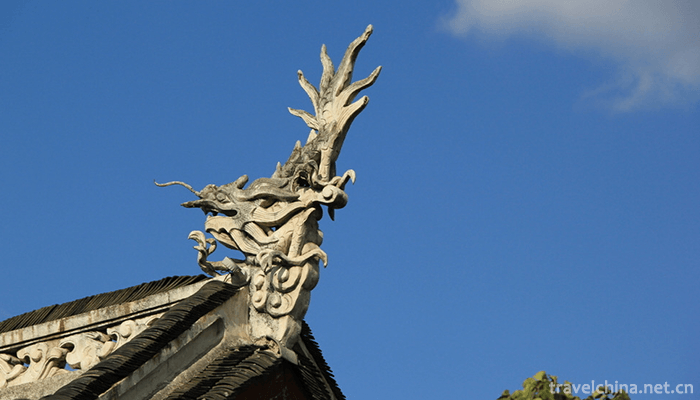
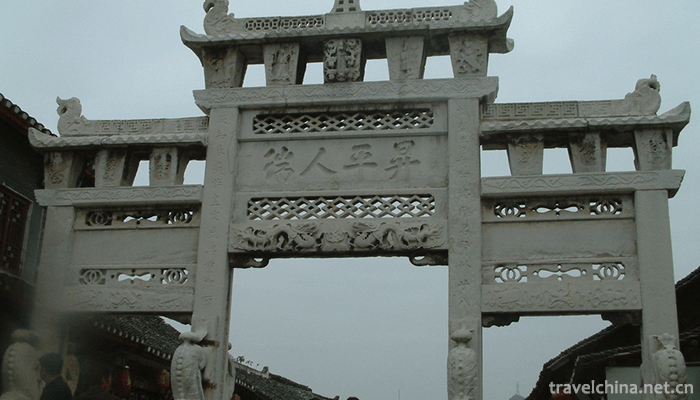
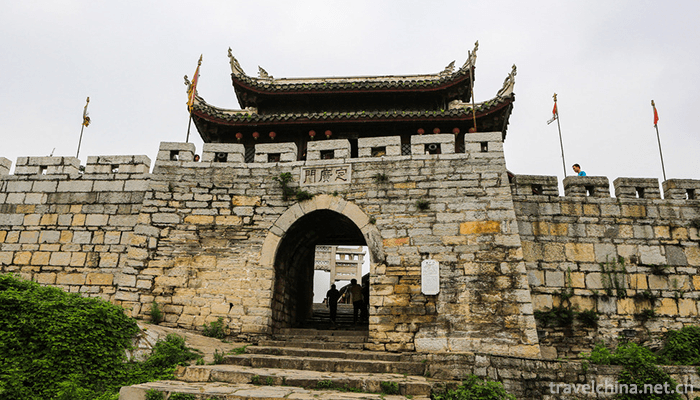
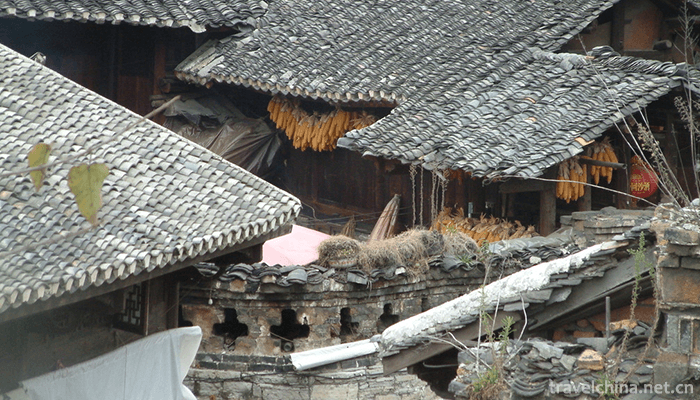
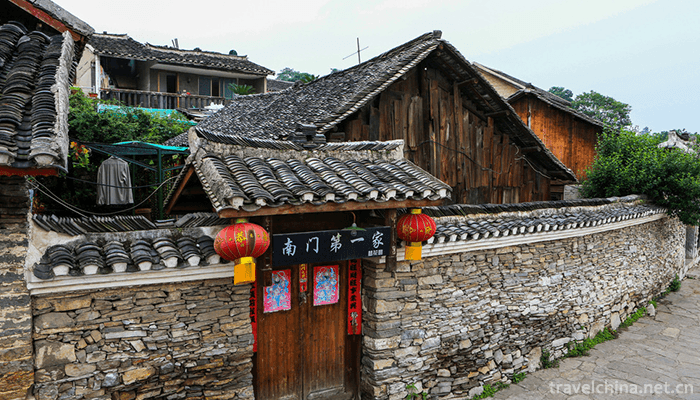
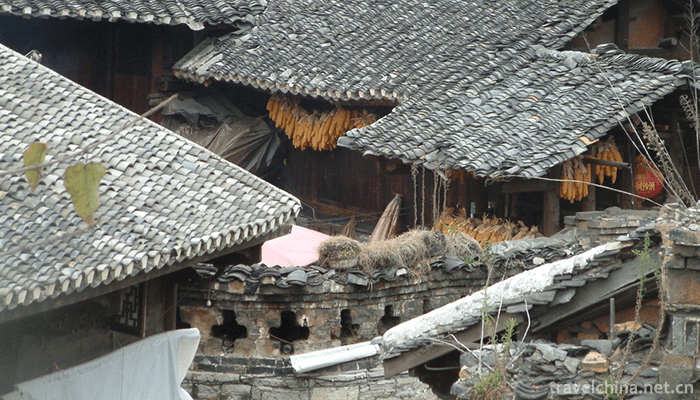
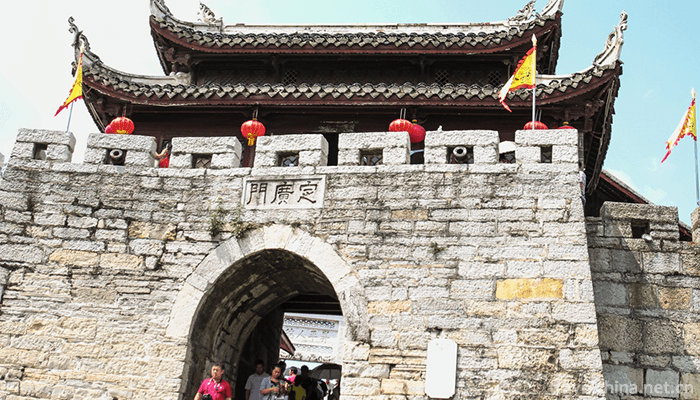
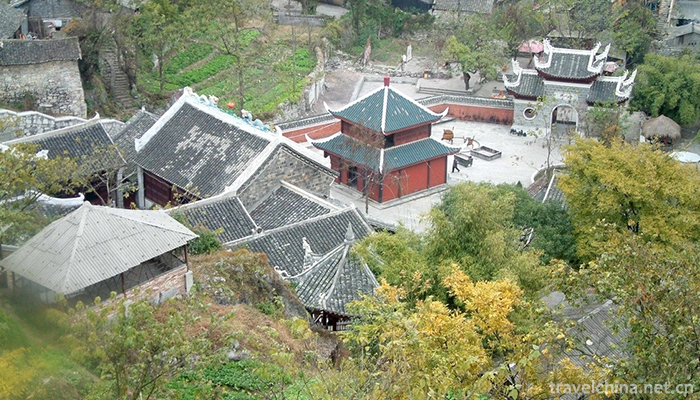
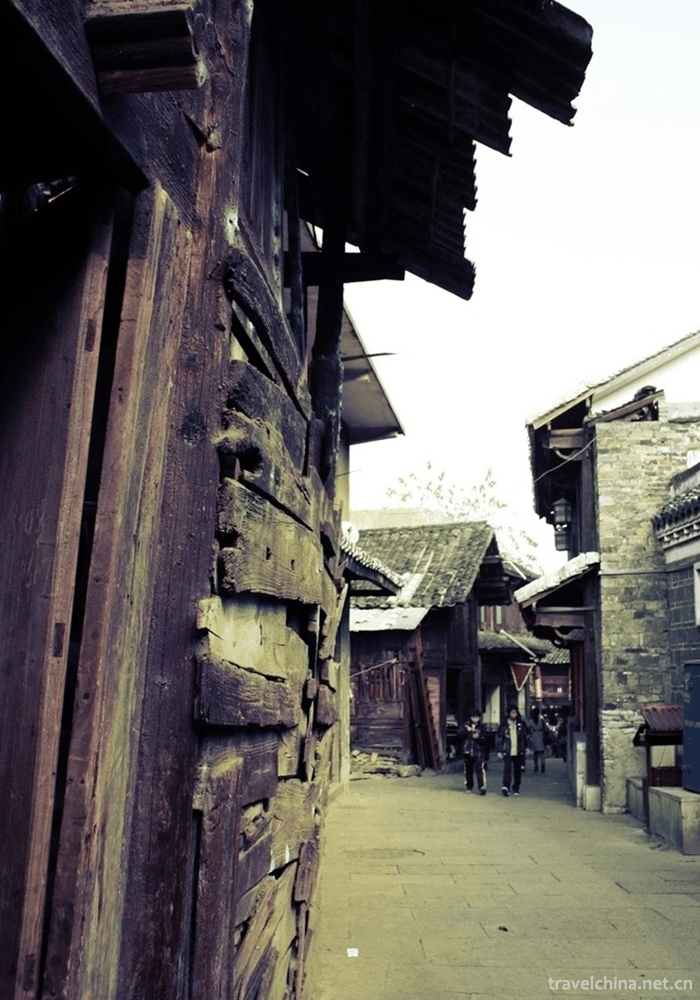
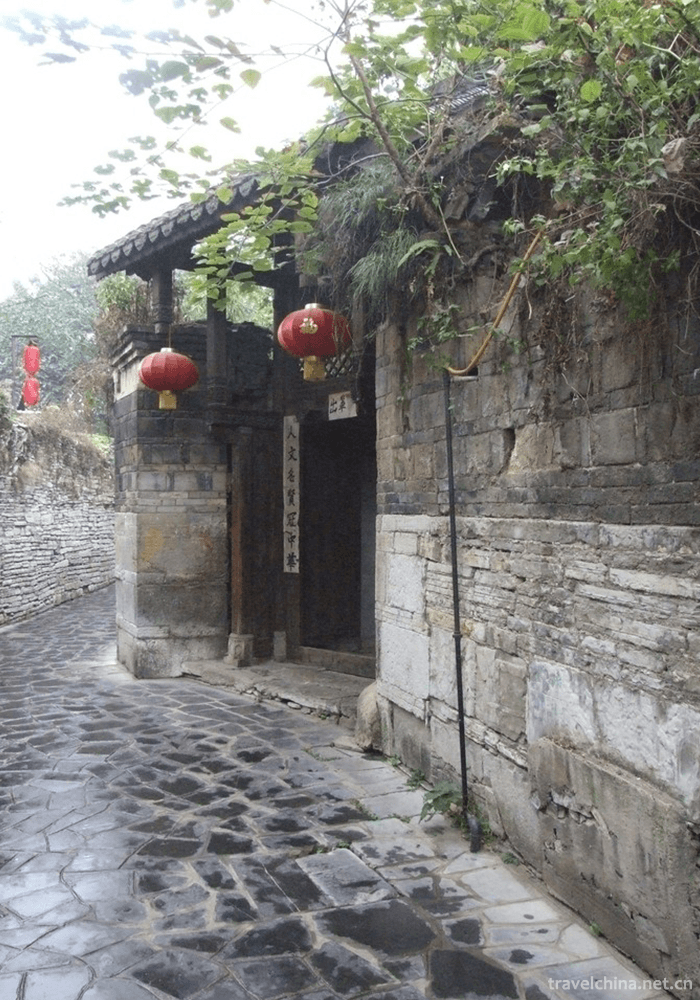
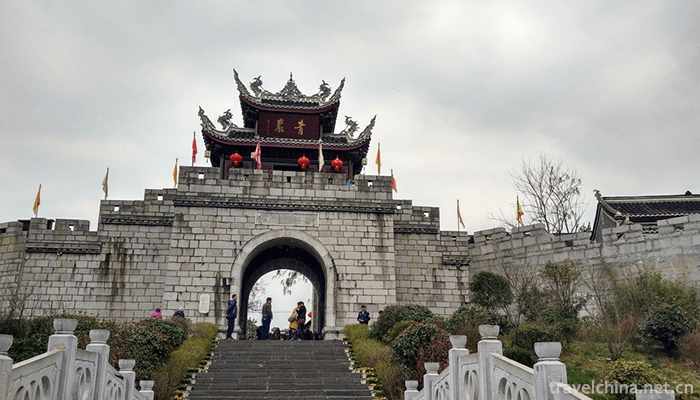
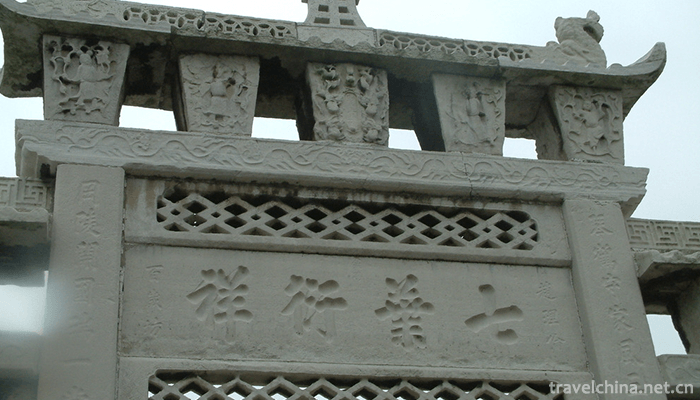
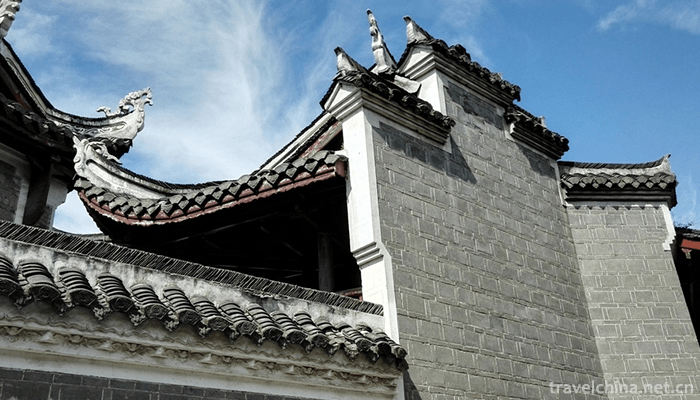
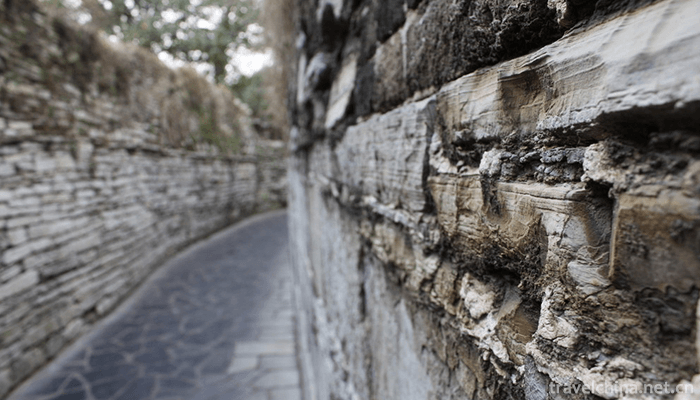
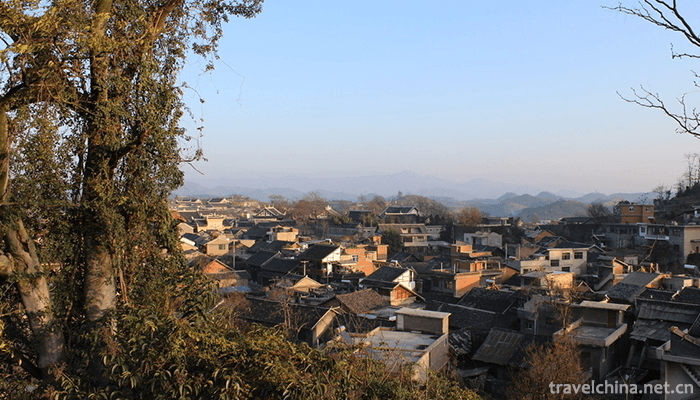
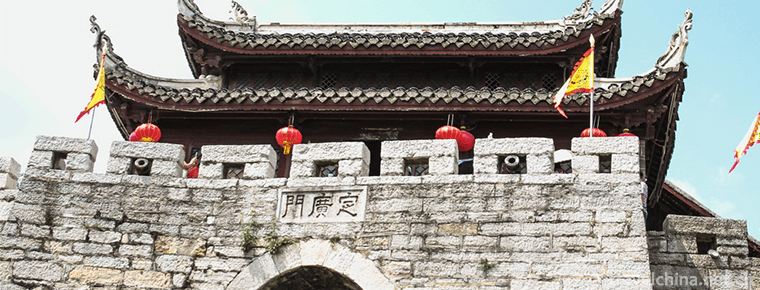
-
1.Martial Art
Wushu is a technology inherited from ancient military wars. Martial arts can strengthen the body and defend the enemy
Time 2018-11-13 -
2.Hongtong Dahuaishu Ancestor Memorial Garden
Located in Hongdong County, Shanxi Province, Hongdong Dahuashu ancestor-seeking scenic spot is the only national sacrificial site with the theme of "root-seeking" and "ancestor-sacrific
Time 2018-11-24 -
3.Confucius Temple
Nanjing Confucius Temple is located in Gongyuan Street on the North Bank of Qinhuai River in Qinhuai District of Nanjing City and west of Jiangnan Gongyuan Temple, namely Nanjing Confucius Temple
Time 2018-12-06 -
4.Hani terrace Yuanyang terrace
Yuanyang Terrace, located in the south of Ailaoshan Mountain in Yuanyang County, Yunnan Province, is a masterpiece left by the Hani people from generation to generation. Yuanyang terrace is the core a
Time 2019-01-13 -
5.Firing Techniques of Chaozhou Coloured Porcelain
In Chaozhou at the end of the Qing Dynasty, new colored pigments were used in the colored porcelain painting. Combining traditional glaze painting art with traditional Chinese painting
Time 2019-04-16 -
6.Silk Strings of Laohekou
Laohekou Silk String is a traditional folk music in Xiangyang City, Hubei Province. Laohekou Silk String is different from other forms of folk literature and art. It is a music that combines folk arti
Time 2019-05-11 -
7.Ningbo Mud Golden Paint
Ningbo mud gold paint is a local traditional lacquerware process in Zhejiang Province. Chinese raw lacquer is the main raw material. Raw lacquer, also known as big lacquer and real lacquer,
Time 2019-06-07 -
8.Shuoguzi
Shuoguzi, also known as Jingzhou Shuoguzi, is a kind of traditional folk music in Hubei Province. It mainly talks, sings in the middle, beats drums and tells stories, accompanied by suona. It is popul
Time 2019-06-16 -
9.Xuzhou Qinshu
Xuzhou Qinshu is a kind of opera recognized by Xuzhou local people in Jiangsu Province. Spread in Xuzhou. At first, it was a recreational activity of "playful friends" in the leisure time of
Time 2019-07-09 -
10.Shaoxing opera
Vietnam Opera is the second largest opera in China, known as the second national opera, also known as the "most widely circulated local opera". Some people think that it is the "largest
Time 2019-07-16 -
11.Zezhou Sixianshu
Zezhou Sixianshu is a popular performance form in Zezhou Prefecture, Shanxi Province in Qing Dynasty. It is named after Sixian (Sihu) as the main accompaniment instrument. There is no documentary info
Time 2019-07-16 -
12.Cross stitch of Chinese embroidery
The earliest cross stitch was embroidery on animal fur fabrics with silk extracted from silkworm cocoons. Later, it was used to decorate clothes and furniture. Cross stitch, with its simple embroidery method, noble and gorgeous appearance, exquisite
Time 2020-12-12